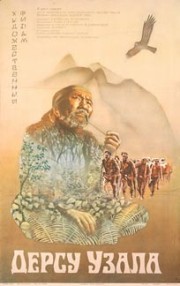 The month has changed again it seems, and so the focus of the Akira Kurosawa Online Film Club shifts to the next film on the list. Marked for March is Kurosawa’s 1975 venture to Siberia, the much praised Dersu Uzala.
The month has changed again it seems, and so the focus of the Akira Kurosawa Online Film Club shifts to the next film on the list. Marked for March is Kurosawa’s 1975 venture to Siberia, the much praised Dersu Uzala.
The film, which won the 1975 Academy Award for Best Foreign Language Film, was the only movie that Kurosawa filmed outside of Japan. It is based on the accounts of the turn of the century Russian explorer Vladimir Arsenyev, who wrote about his unique relationship with Siberia and one of its more curious inhabitants, the Nanai hunter Dersu Uzala. If you would like to familiarise yourself more with Arsenyev’s work, there is a fairly comprehensive multilingual website dedicated to Dersu Uzala.
As always, you can take a look at the DVD section for information about various releases of the movie, while the book section lists the primary literature dealing with Kurosawa’s works.
And the place for discussion, of course, is over at the forums.






The link to the multilingual Dersu Uzala site provides some wonderful images of Arsenyev and Uzala-
Thumbs up!